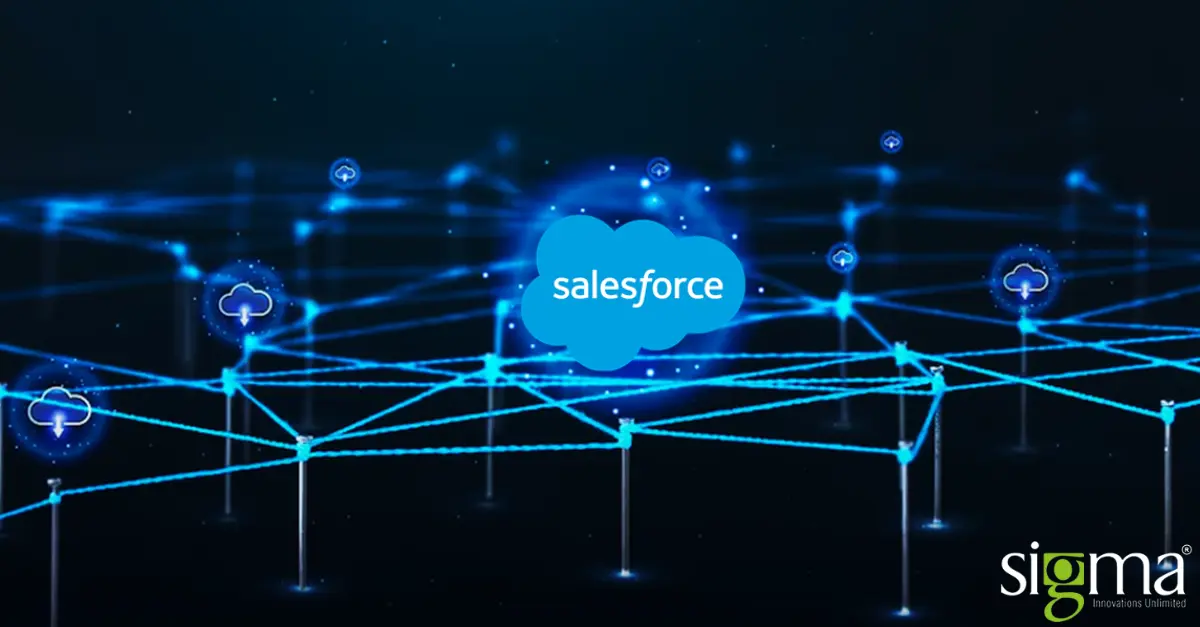The Power of Connected Systems with Salesforce Integration

( Image Credit – Freepik )
In today’s data-driven world, businesses rely on a complex ecosystem of applications to manage various functions. However, siloed data in these applications hinders efficiency and creates a fragmented customer experience. This is where Salesforce Integration comes in, acting as the bridge that seamlessly connects your Salesforce CRM with other critical business systems.
What is Salesforce Integration?
Salesforce Integration is the process of connecting Salesforce with external applications and databases. This allows for a two-way flow of data, ensuring information consistency across your entire business ecosystem. Imagine your marketing automation platform automatically syncing leads with Salesforce or your accounting system updating financial data within Salesforce – that’s the power of integration.
Why Integration Matters
Integration unlocks a multitude of benefits for businesses:
- Improved Data Accuracy and Consistency: Eliminate manual data entry and ensure all your systems reflect the same information.
- Enhanced Efficiency: Automate workflows and streamline processes across platforms, saving you time and resources.
- Unified Customer View: Gain a 360-degree view of your customers by consolidating data from all touchpoints.
- Boosted Productivity: Empower your teams with real-time, centralized data access, allowing them to focus on core tasks.
- Better Decision-Making: Leverage integrated data for insightful reporting and data-driven business decisions.
Types of Salesforce Integration Architectures
Salesforce offers various integration architectures tailored to meet diverse business needs:
Point-to-Point integration involves establishing direct connections between individual systems or applications for specific use cases. In this architecture, integrations are typically set up one at a time, with each integration tailored to meet a particular requirement. While Point-to-Point integration can be quick to implement for simple scenarios, it may lead to a proliferation of connections, making maintenance and scalability challenging as the number of integrations grows.
Advantages:
- Simple and straightforward implementation.
- Direct communication between systems without intermediaries.
Challenges:
- Lack of scalability and flexibility as the number of integrations increases.
- Maintenance becomes complex with multiple point-to-point connection
Hub-and-Spoke integration architecture revolves around a centralized integration hub (or middleware) that serves as a mediator between multiple systems, known as spokes. The hub acts as a central point for routing data between spokes, enabling seamless communication and data exchange. This architecture facilitates a more organized and scalable approach to integration by centralizing control and management.
Advantages:
- Centralized control and management of integrations.
- Scalability and flexibility to add or modify integrations without affecting other connections.
Challenges:
- Initial setup and configuration of the integration hub may require additional effort.
- Dependency on the hub, which may become a single point of failure if not properly designed and maintained.
Salesforce Integration Levels
Integration can occur at different levels depending on your needs:
1. Data Integration:
Data integration involves synchronizing data between the Salesforce platform and external systems, databases, or applications. The primary goal of data integration is to ensure that relevant information is consistently available across different systems, enabling a unified view of data. Data integration may involve processes such as data replication, synchronization, or real-time streaming to keep data aligned and up-to-date.
Use Cases:
- Syncing customer data between Salesforce CRM and marketing automation platforms.
- Integrating Salesforce with ERP systems for seamless order processing and inventory management.
- Real-time data streaming for monitoring and analytics purposes.
Tools and Technologies:
- ETL (Extract, Transform, Load) tools for data extraction and transformation.
- Middleware platforms for data synchronization and replication.
- APIs (Application Programming Interfaces) for real-time data exchange.
2. Process Integration:
Process integration focuses on automating workflows and business processes across different systems, applications, or departments. The objective is to streamline operations, eliminate manual tasks, and improve efficiency by orchestrating the flow of data and actions between systems. Process integration may involve integrating Salesforce with third-party applications, legacy systems, or external services to automate tasks such as lead routing, order processing, or customer support.
Use Cases:
- Automating lead-to-customer conversion processes between Salesforce CRM and marketing automation platforms.
- Integrating Salesforce with support ticketing systems for automated case escalation and resolution.
- Orchestrating order fulfillment processes between Salesforce and ERP systems.
Tools and Technologies:
- Workflow automation tools within Salesforce, such as Process Builder and Flow.
- Integration platforms-as-a-service (iPaaS) for building and managing automated workflows.
- Custom development using APIs and event triggers.
3. User Interface Integration:
User interface integration involves embedding external functionality or data within the Salesforce user interface (UI) to provide a seamless user experience. The goal is to enhance productivity and usability by bringing relevant information and actions directly into the Salesforce environment. User interface integration may include embedding external web applications, dashboards, or reports within Salesforce, enabling users to access and interact with external data without leaving the Salesforce platform.
Use Cases:
- Embedding third-party analytics dashboards or reporting tools within Salesforce.
- Integrating collaboration tools, such as chat or video conferencing, into Salesforce for real-time communication.
- Incorporating external applications or microservices within Salesforce Lightning components.
Tools and Technologies:
- Salesforce Lightning Web Components for building custom UI components.
- External JavaScript libraries or frameworks for embedding external content within Salesforce UI.
- OAuth authentication for secure access to external resources from within Salesforce.
Time-Based Integration Processes
Salesforce integration can be categorized based on data exchange frequency:
- Real-time Integration: Data is exchanged instantaneously, ideal for critical updates.
- Batch Integration: Data is transferred periodically in bulk, suitable for large datasets.
Salesforce Integration Capabilities
Salesforce offers a robust set of tools to facilitate seamless integration:
- Change Data Capture (CDC): Tracks changes made in external systems and triggers updates in Salesforce.
- Salesforce Workbench: A visual tool for building and managing integrations.
- APIs (Application Programming Interfaces): Provide programmatic access to Salesforce data and functionality.
We’ll delve deeper into specific APIs:
- SOAP API: A mature, XML-based API offering a wide range of functionalities.
- REST API: A modern, lightweight API known for its flexibility and ease of use.
Difference between SOAP vs REST
- Protocol: SOAP is protocol-based, while REST is an architectural style.
- Message Format: SOAP uses XML, and REST typically uses JSON.
- Complexity: SOAP is more complex and secure, REST is simpler and more flexible.
Key Considerations for REST APIs
- Versioning: Ensures compatibility with future Salesforce updates.
- Authentication: Secures access to your Salesforce data.
- Error Handling: Establishes a robust mechanism for handling API errors.
Beyond SOAP vs REST
- Bulk API: Facilitates efficient transfer of large datasets.
- Streaming API: Enables real-time data exchange for high-velocity data streams.
- Metadata API: Allows you to manage and deploy Salesforce customizations.
- Outbound Message Service: Sends data notifications from Salesforce to external systems.
- Callouts: This enables Salesforce to directly invoke functionalities in external applications.
Additional Integration Options
- Salesforce Connect: Provides a declarative approach to connect to external systems.
- Heroku Connect: Integrates Salesforce with Heroku applications.
Data Virtualization
This technique presents data from external sources as if it resides within Salesforce, improving data accessibility without physical data movement. Data virtualization is a powerful concept in the realm of data management, particularly in the context of Salesforce integration. It involves presenting data from disparate sources in a unified manner without physically moving or replicating the data. Instead of consolidating data into a single repository, data virtualization creates a virtual layer that abstracts the underlying data sources, providing a unified view of the data to users and applications.
Common Salesforce Integration Scenarios & Solutions
- CRM Integration: Integrating Salesforce with marketing automation tools, ERP systems, or customer support platforms for a 360-degree view of customer interactions.
- eCommerce Integration: Syncing Salesforce with eCommerce platforms for seamless order management, inventory tracking, and customer data synchronization.
- Legacy System Integration: Modernizing legacy systems by connecting them with Salesforce to leverage its advanced features and functionalities.
- Analytics Integration: Integrating Salesforce with business intelligence tools for real-time reporting, data visualization, and predictive analytics.
Your Trusted Salesforce Partner
As a Salesforce Consulting Services provider, we at Sigma Infosolutions understand the unique integration needs of every business. We don’t just connect systems; we craft strategic solutions that unlock the true potential of Salesforce for your organization.
Ready to harness the power of Salesforce Integration? Contact us today for a free consultation and discover how we can help you build a seamlessly connected ecosystem that drives success.



